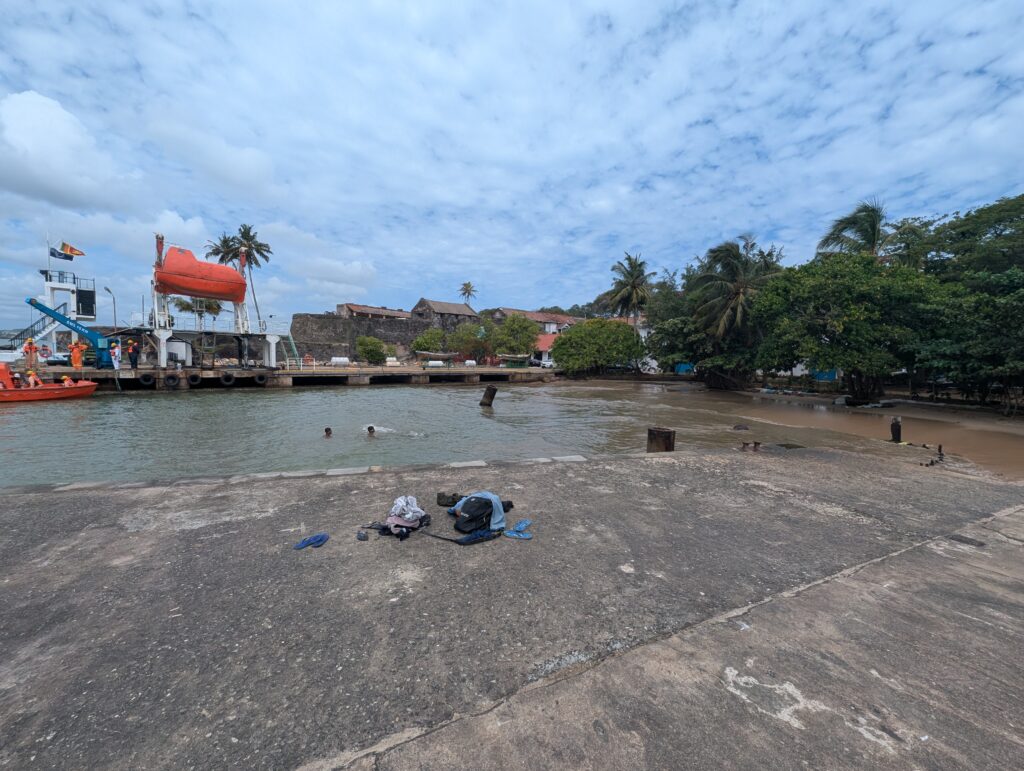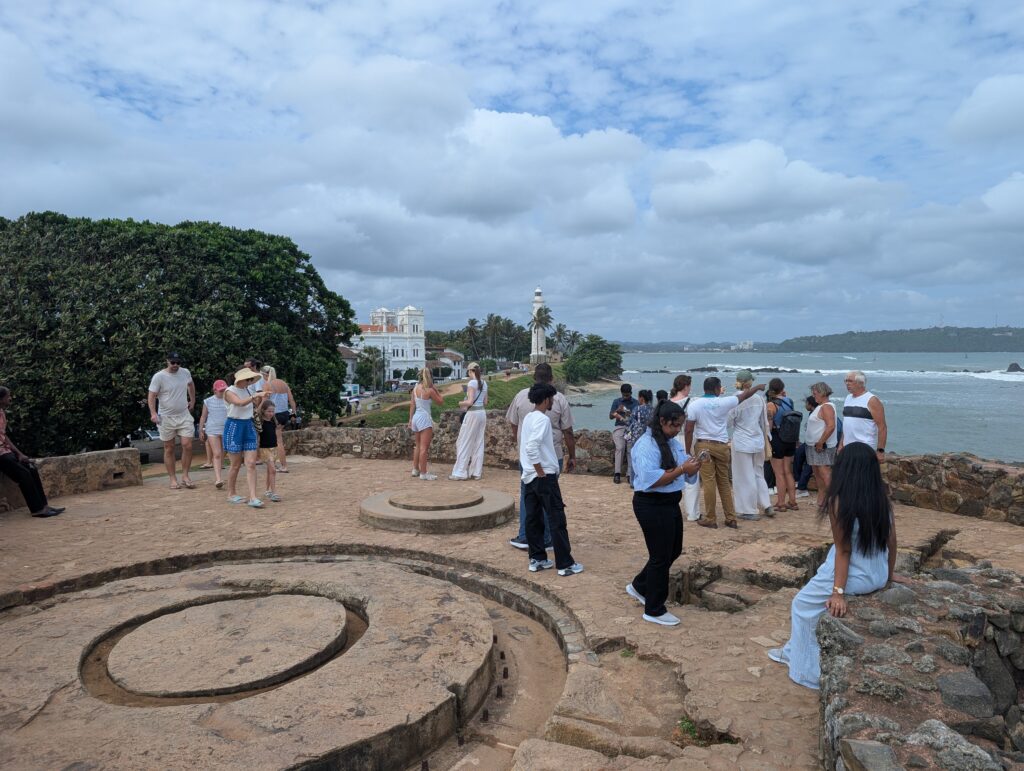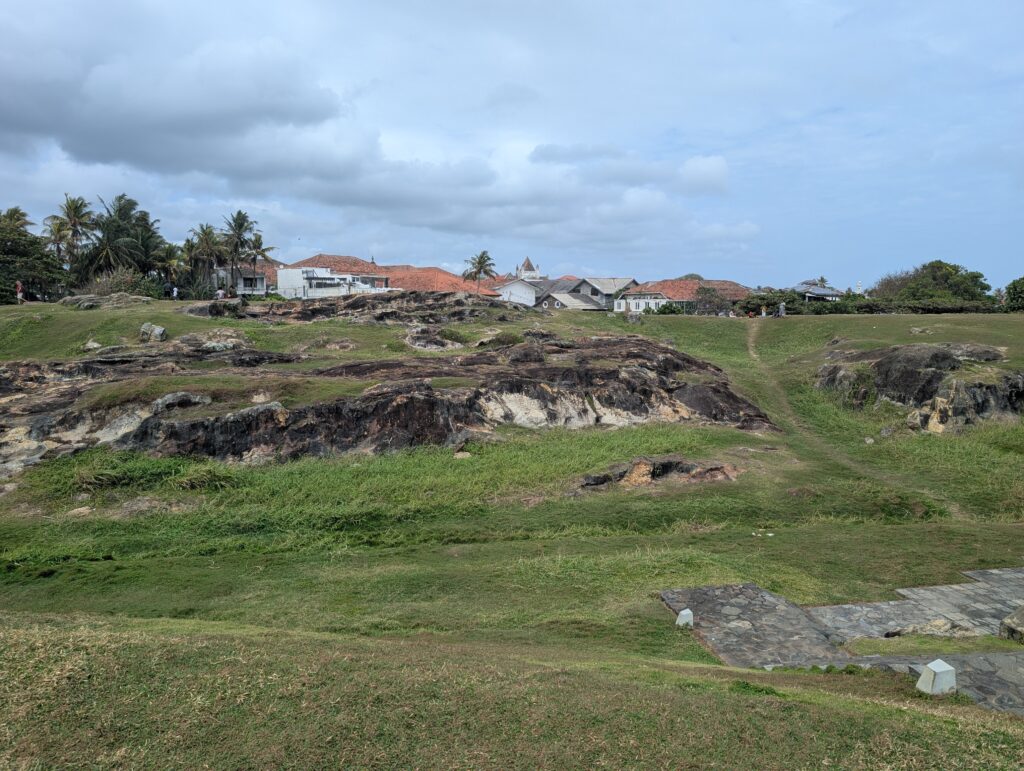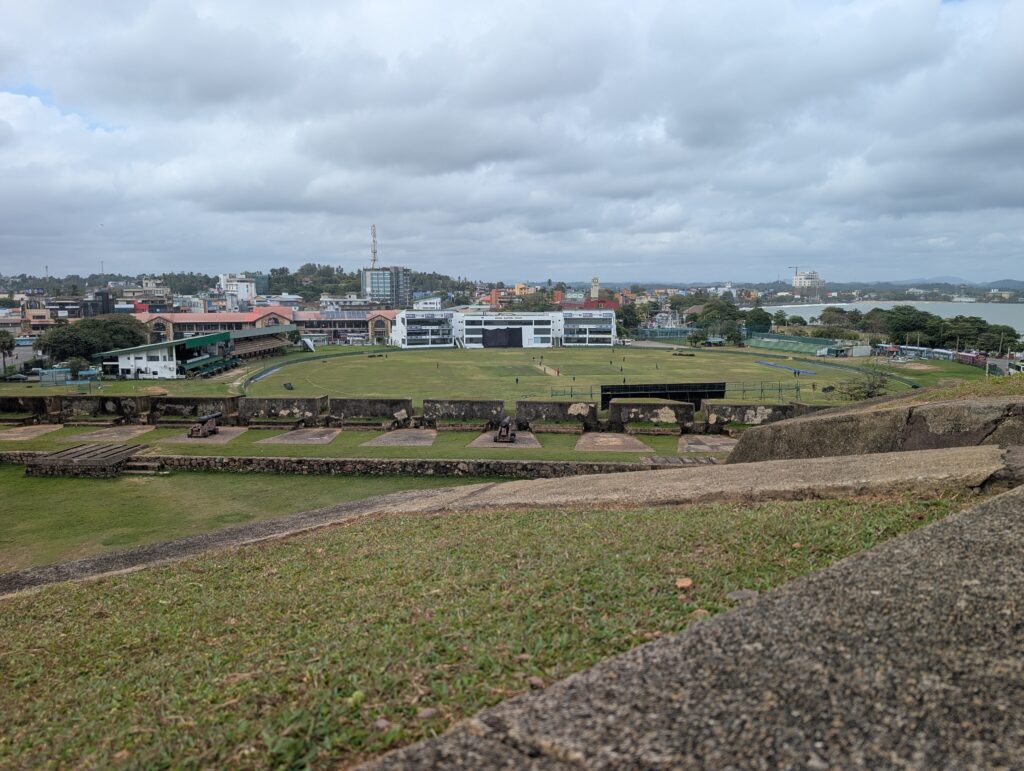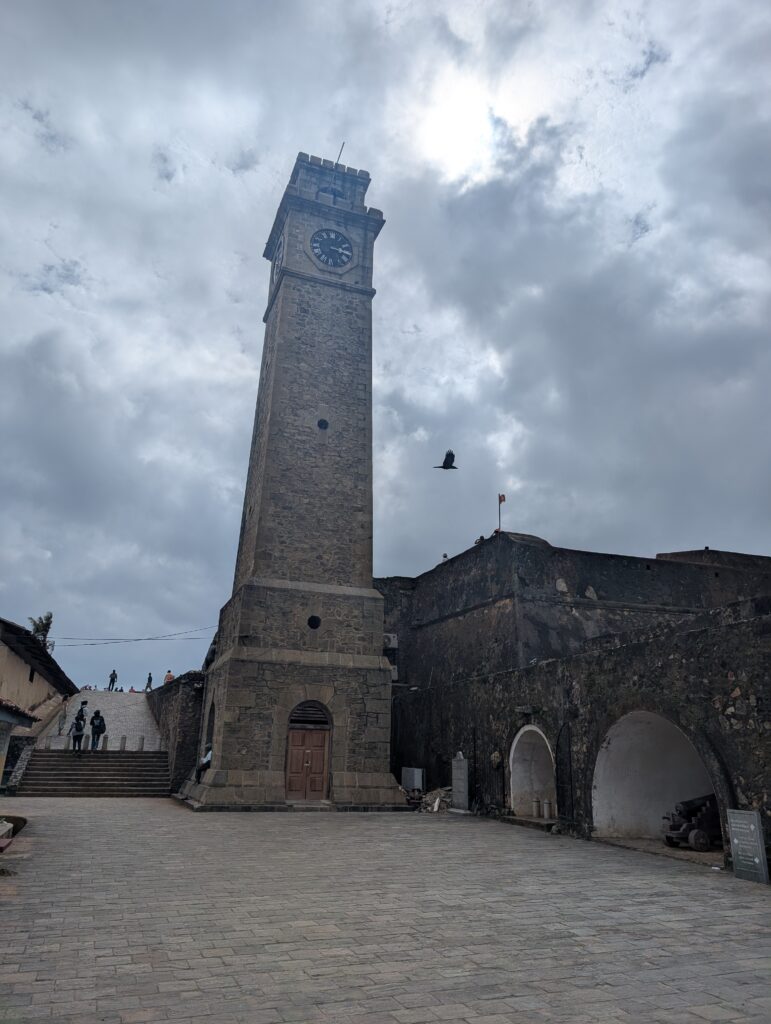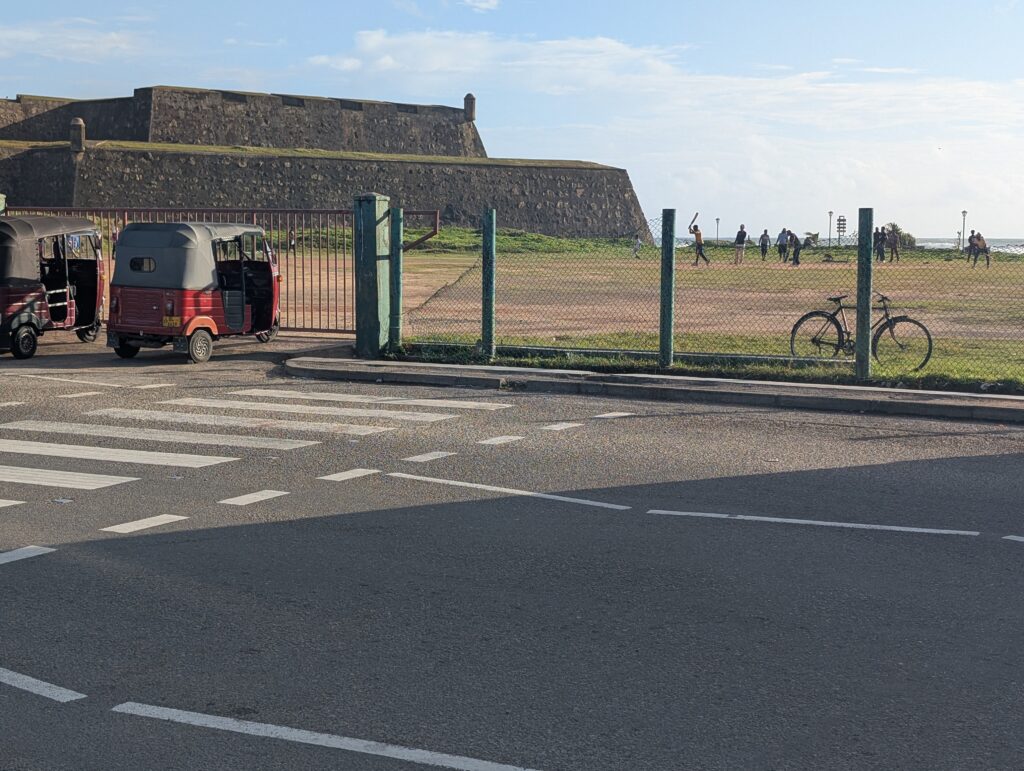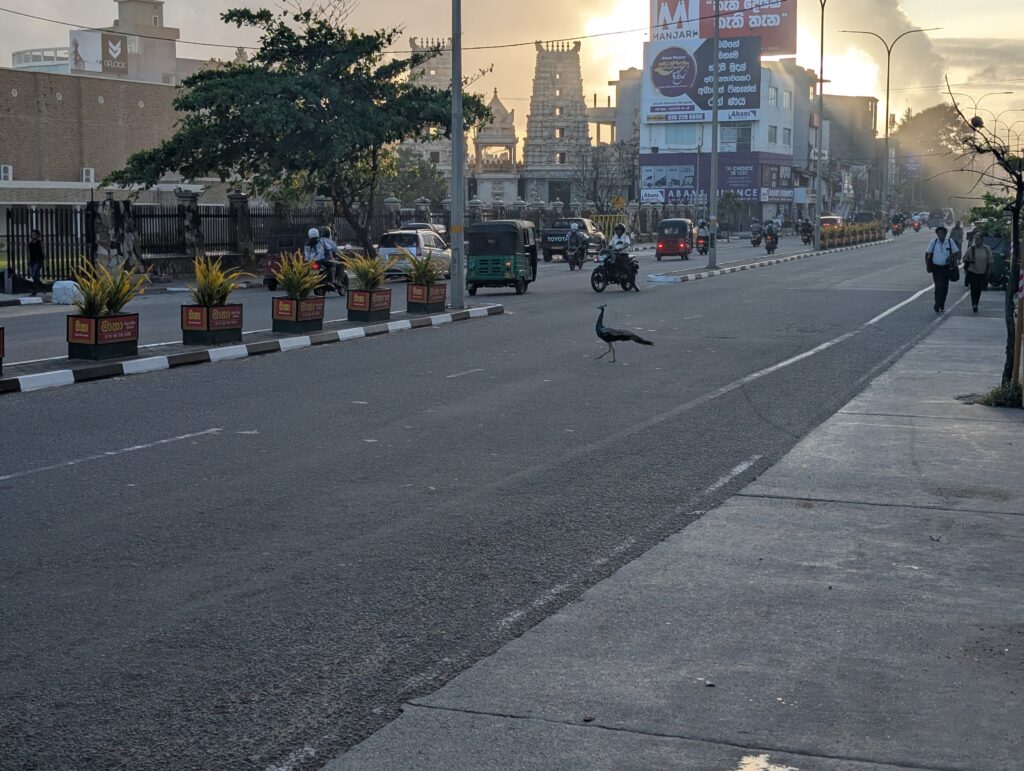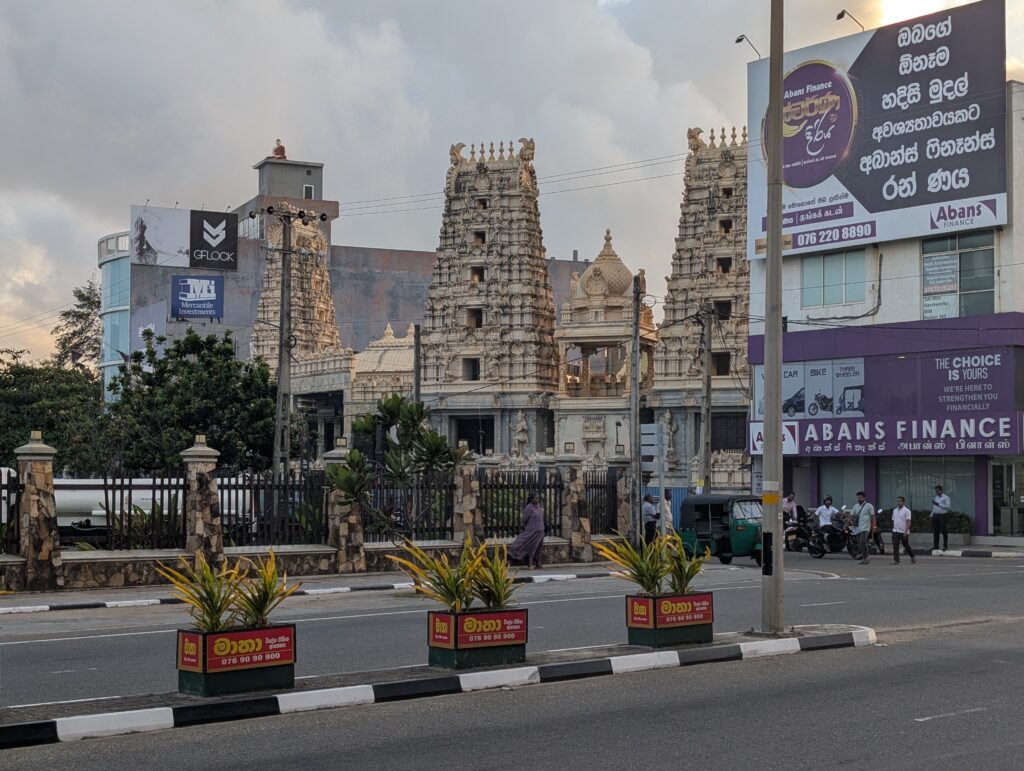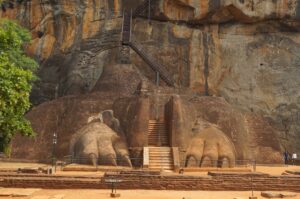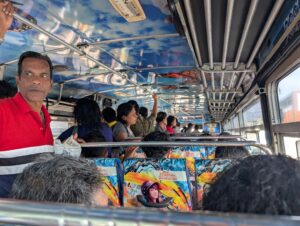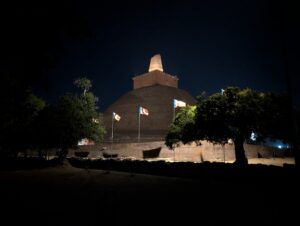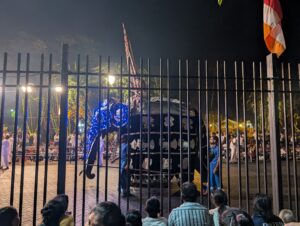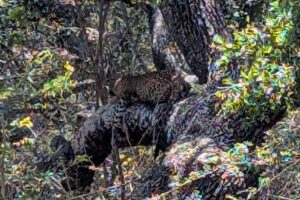Galle
Dutch Colonial Fort on the Sri Lankan Coast
I needed a break by the time I got to Galle. I had been driving myself around Sri Lanka, which would have been stressful enough under any circumstances. I had been traveling to a new place every day, violating my own rule about dedicating some days to travel from one place to the next. Beyond all of that, Sri Lanka just tired me in general with the constant pestering to buy things and the ever present attempts to squeeze money from me by every Sri Lankan I talked to. I was ready to just rest in one place for a few days. I decided Galle would be the place. I found a nice, inexpensive motel. Galle was a beach town. There were a few activities to do there, but I could do each in a couple or a few hours during a day and relax the rest of the day in my room or at the beach.
Predictably, I was not able to confine my self completely to my room. I still ended up with a pretty busy afternoon on the 5th of August. I ran in the morning, ate some breakfast, then got a haircut. In the afternoon, I decided I would see Galle Fort. This did not seem like it would take too long. I was pleasantly surprised to read that Galle Fort could be visited at no charge – a first for me in Sri Lanka. It turned out, however, that this was only because Galle Fort is really a walled part of the old city, far to large to manage for admissions. Too many businesses operated there for the traffic to be restricted. In order to make up for this, nearly every historic building within Galle Fort, right down to individual munition storage rooms, had their own separate admissions, in the end adding up to quite a bit more than a reasonable single admission to the site would have cost. I made up my mind to avoid paying admissions, whether that meant just not going inside the individual buildings if I could ascertain what they were all about without going in, or just creatively avoiding paying if it was convenient to get in without paying.
As was the case at many South Asian coastal ports, Galle had been at one point Portuguese, and later Dutch. Most of the fortifications, colonial buildings, and historical infrastructure in the old walled city are Dutch. I met an older Dutch couple as I walked toward Galle Fort. They had similar thoughts about Sri Lanka’s aggressive collection of fees to tourists at every minute opportunity. I found this amusing, as this reinforces some historical stereotypes about the Dutch. My Dutch friends acknowledged and laughed about this, self-identifying as frugal. They were excited to see evidence of their small country’s historic colonial influence. They shared none of the modern shame about Western influence. They were just happy to see that their Dutch ancestors had been out doing big things around the world in the distant past.
It is not obvious when approaching the walls of Galle Fort whether they were intended to protect the European settlement from other colonial powers on the high seas, or from the local population. Most likely, the original, smaller Portuguese fort had been built with walls facing the sea. When the Dutch and later the British improved upon the fortifications, they strongly reinforced the landward walls to guard against agitation by the locals.
The walls are imposing. You can walk along their tops for most of the perimeter, and that part is free. I made that walk, descending when there seemed to be something interesting on the adjacent streets below. There was no admission at the Dutch Reformed Church I came to early in my walk. The church listed service times, and was apparently still in use. It was established in 1755, and bore all the hallmarks of the Zwinglian influence on the Reformed tradition. The building was very plain, especially in comparison to the Catholic churches in Macau and Saigon, and the ornate Buddhist and Hindu facilities I had seen in so many places along my path. Like many European churches of the era, several parishioners are entombed in the floor. A handful of mostly European tourists strolled around the building, enjoying the ambiance of this representation of simple Dutch Calvinism.
(Continued)

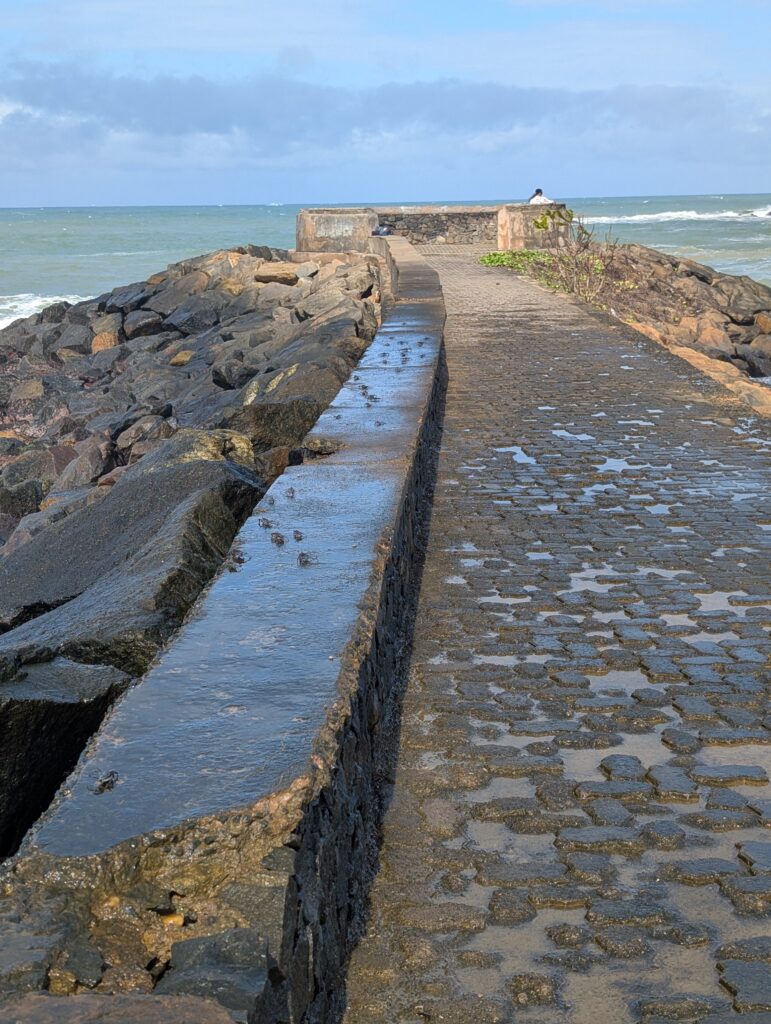
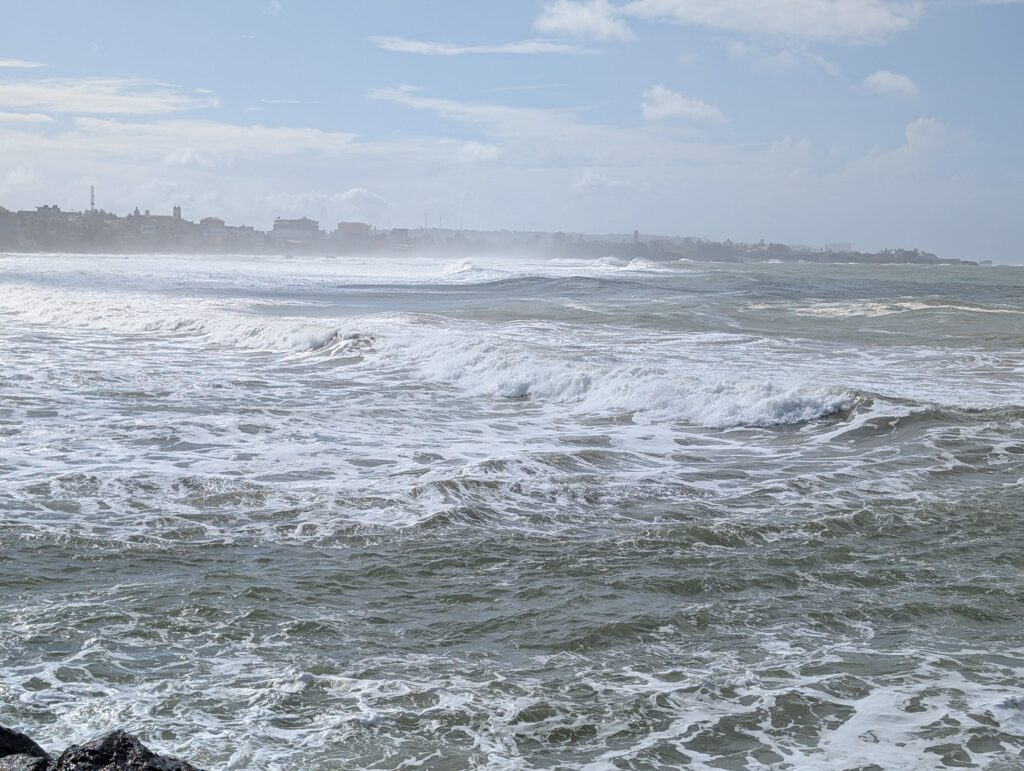
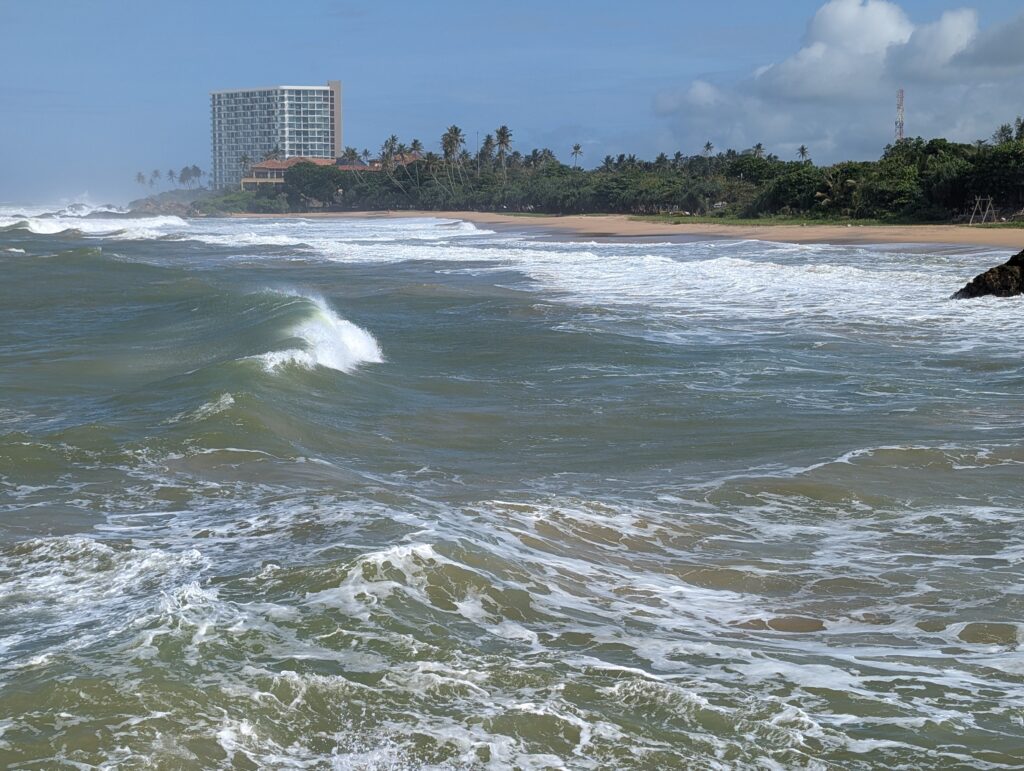

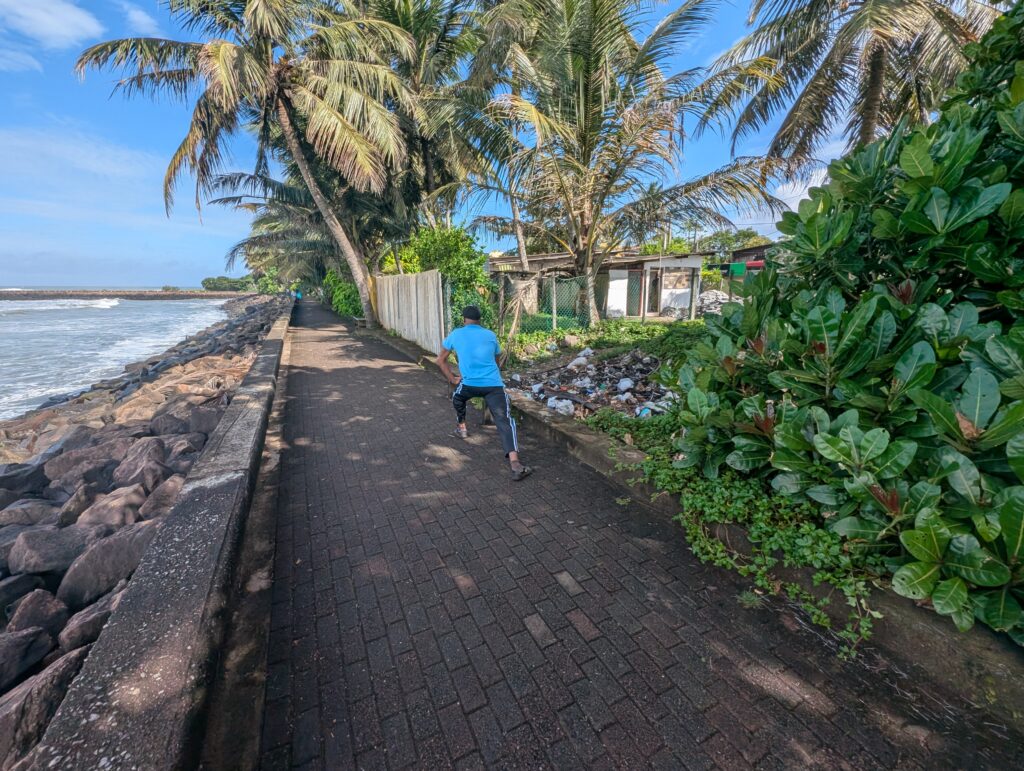

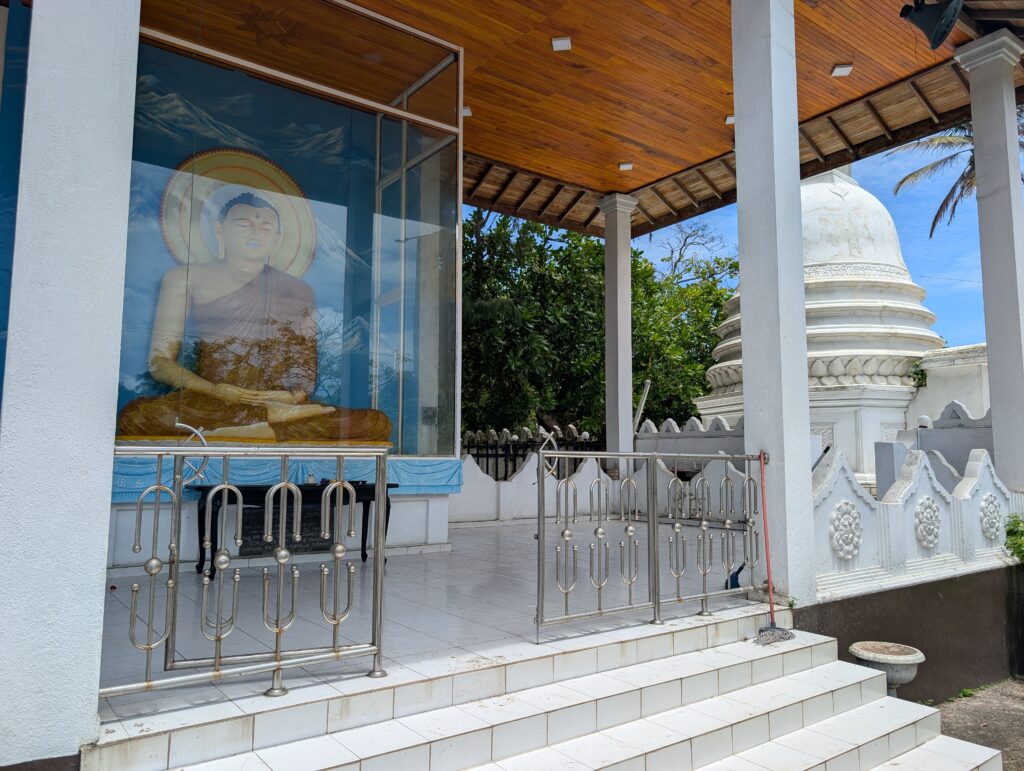
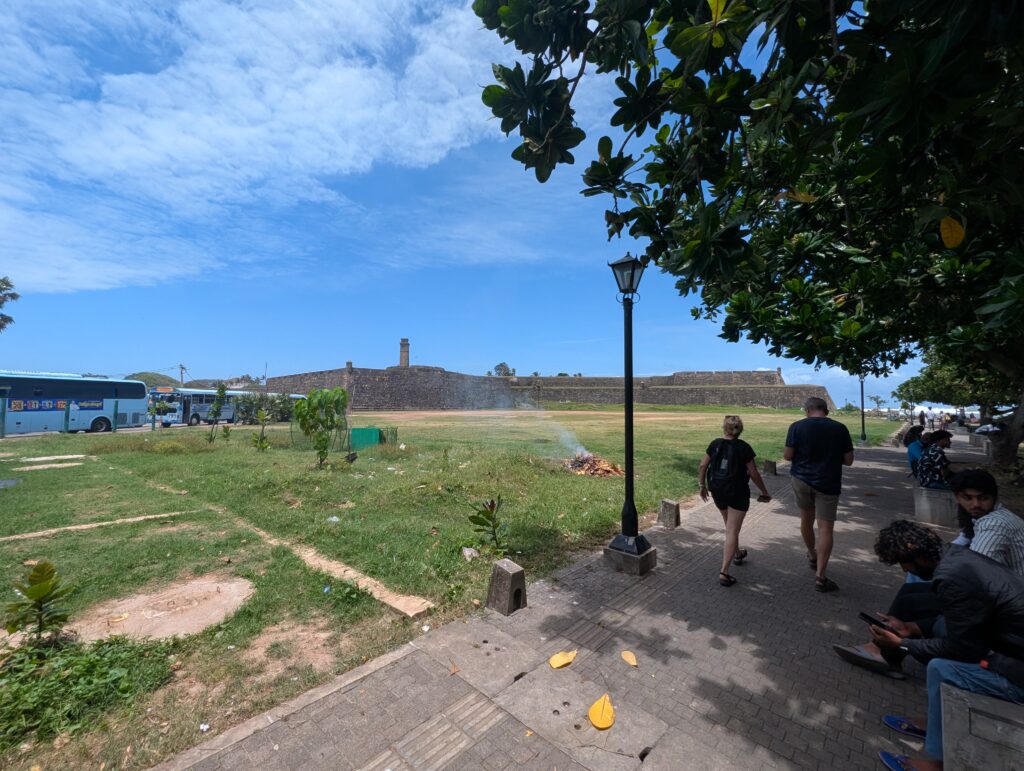



I continued along the wall until I came onto a 1671 Dutch East India Company warehouse that had been converted into the National Maritime Museum. The museum entry was a little steep. Considering my mixed experience with Sri Lankan tourist facilities and the fact that there were several museums just here in the old fort, I opted not to pay the fee. There was a book store I wanted to visit, though. I thought I might find some post cards, and maybe an interesting map or other Sri Lankan souvenirs. The prices were outrageous, and the attendant rude. I continued on my way, wandering through the free portion of the building. No security was present, and I inadvertently ended up inside a part of the Maritime Museum. It turned out to be a reasonably good museum. I ended up wandering it backwards, having accidentally entered at the wrong point. When I retraced my steps back toward the museum bookstore, there were two inattentive guards sitting in chairs, preoccupied by other things. They certainly weren’t concerned with people exiting the museum.
I continued along the wall, checking out abandoned casemates and bastions overlooking land and sea. I came upon the original Portuguese portion of the fort, which until recently was secluded behind a local law enforcement building. Then, you could only enter by requesting access via the police department, but at least it was free. Now, you guessed it, there was another separate admission to the Portuguese section of the fort – fifty rupees for locals and a few thousand for foreigners. I decided I would just go out the old city gate and look at the Portuguese section from the outside. If there was anything special to see inside, I will likely never know.
I have been concentrating on describing historic buildings, but most of the area inside this UNESCO site has been converted into trendy, tourist trap shops and cafes. Even the old hospital is just a series of overpriced restaurants. They block a section of the walls, which I skipped over. I did walk down to a small, local beach, before continuing along the rest of the regular portion of the wall. Eventually, I ended up at the highest portion of the fortification, a built up hill with an iconic clock tower overlooking Sri Lanka’s most famous cricket pitch.
People on our side of the world likely don’t know it, but Sri Lankans are crazy for cricket, and field pretty competitive national teams in that sport. Just outside the front of Galle Fort sits an exclusive cricket club. From the fortified walls, I could tell there was a contest of some sort underway below. I was immediately curious, and interested in observing what I could if it was still going on later in the afternoon. It turned out the cricket club was hosting a tryout for the U20 Sri Lankan national cricket team. A few hours later, when I was done looking at everything inside the fort, I went to watch some of the tryout.
I walked around the interior streets of old Galle, but found only shops selling overpriced refreshments or tourist kitsch. I eventually located a shop selling a few post cards. I bought them, scribbled a few notes to family members, then proceeded to a post office within old town to send them off. The clerk inside made small talk with me as I completed the task. He was marginally perturbed with the Trump Administration for apparently having done something to impact the foreign exchange rate between the dollar and the Sri Lankan Rupee. He was a forex day trader.
(Continued)
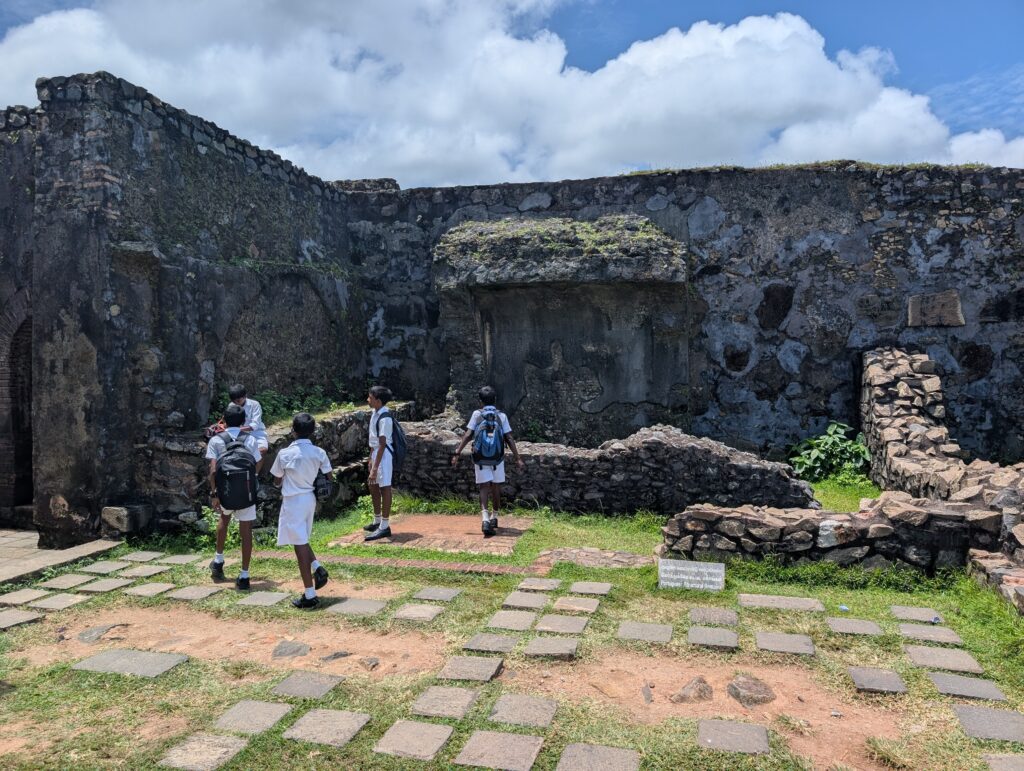
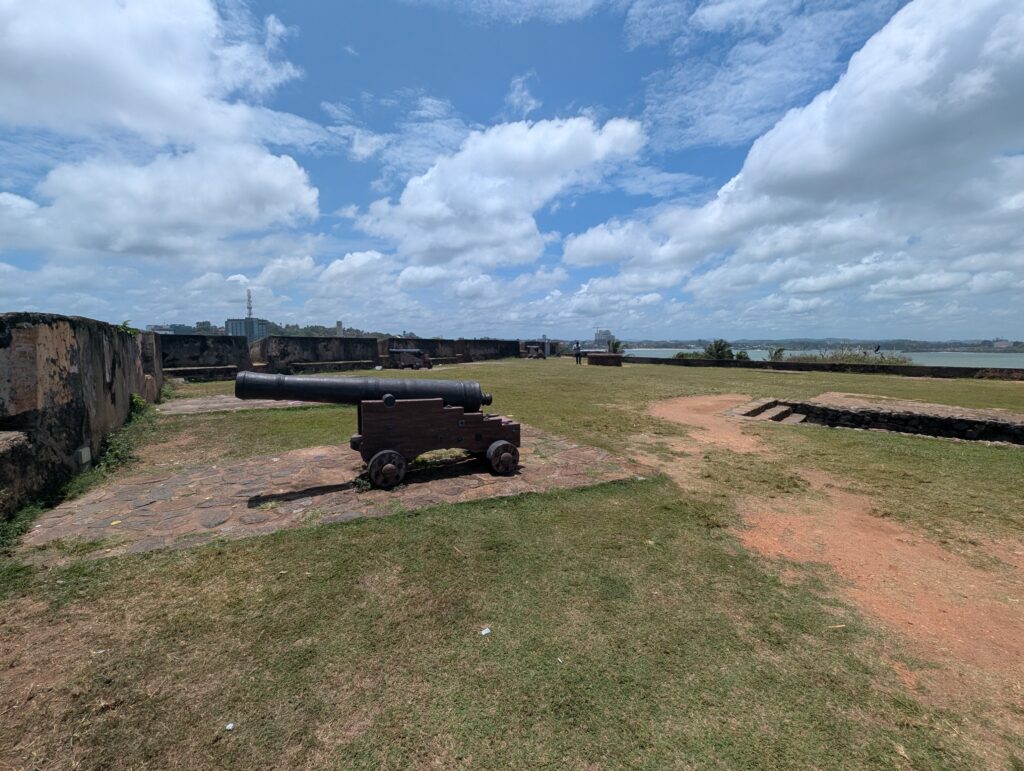
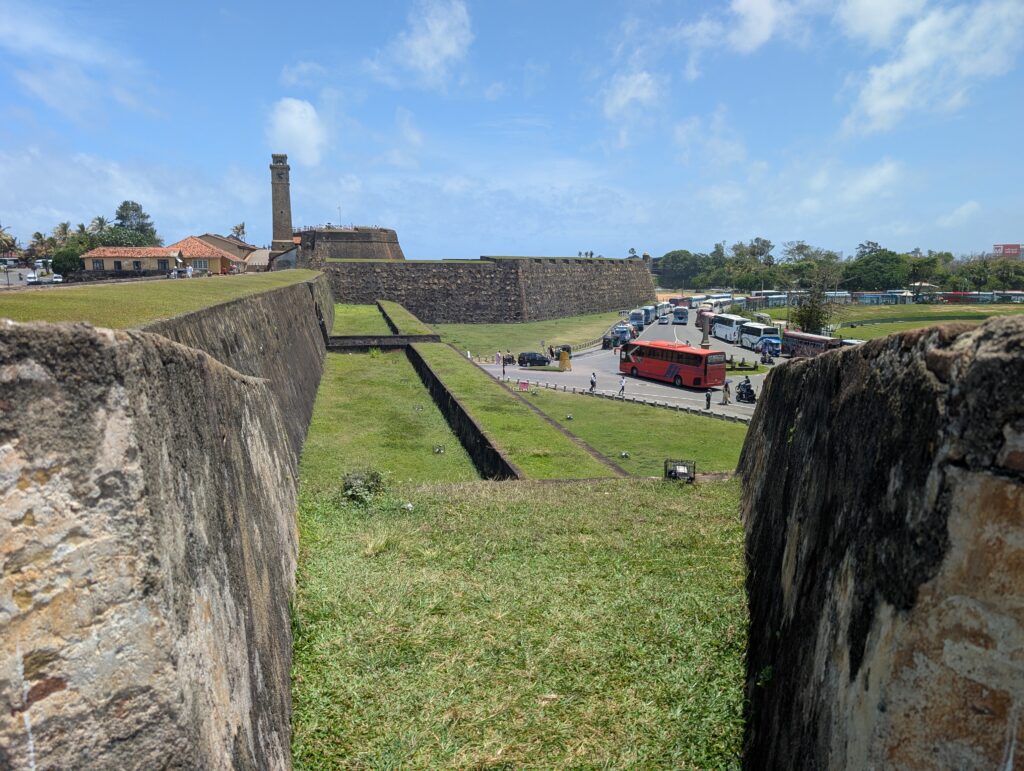
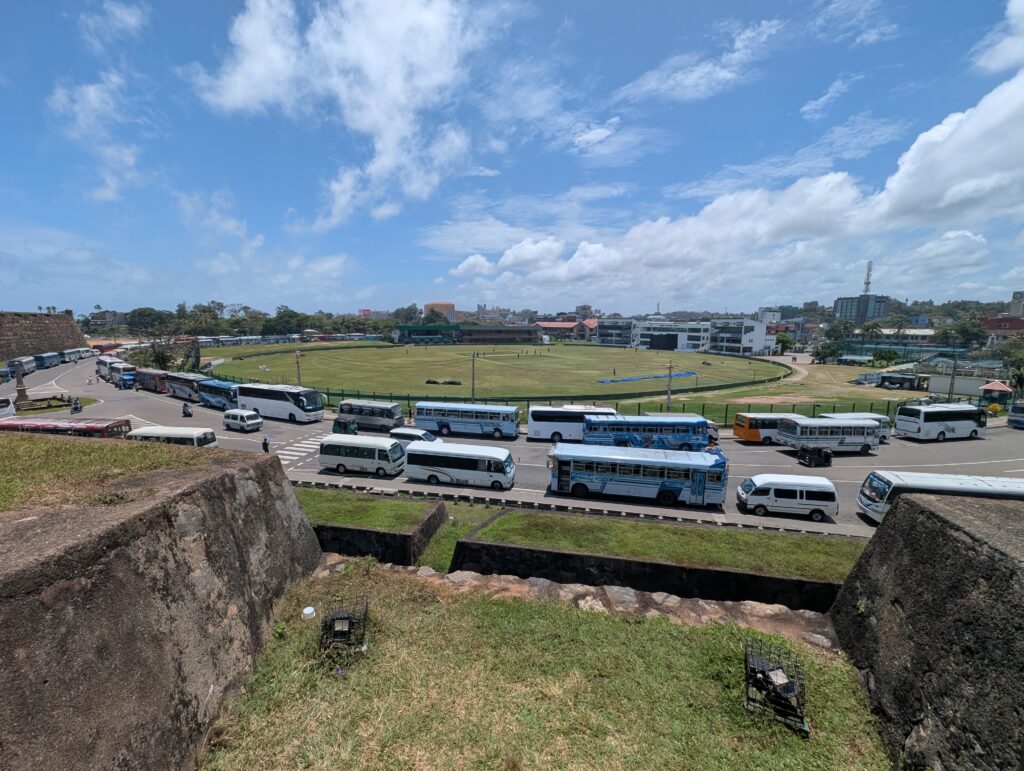
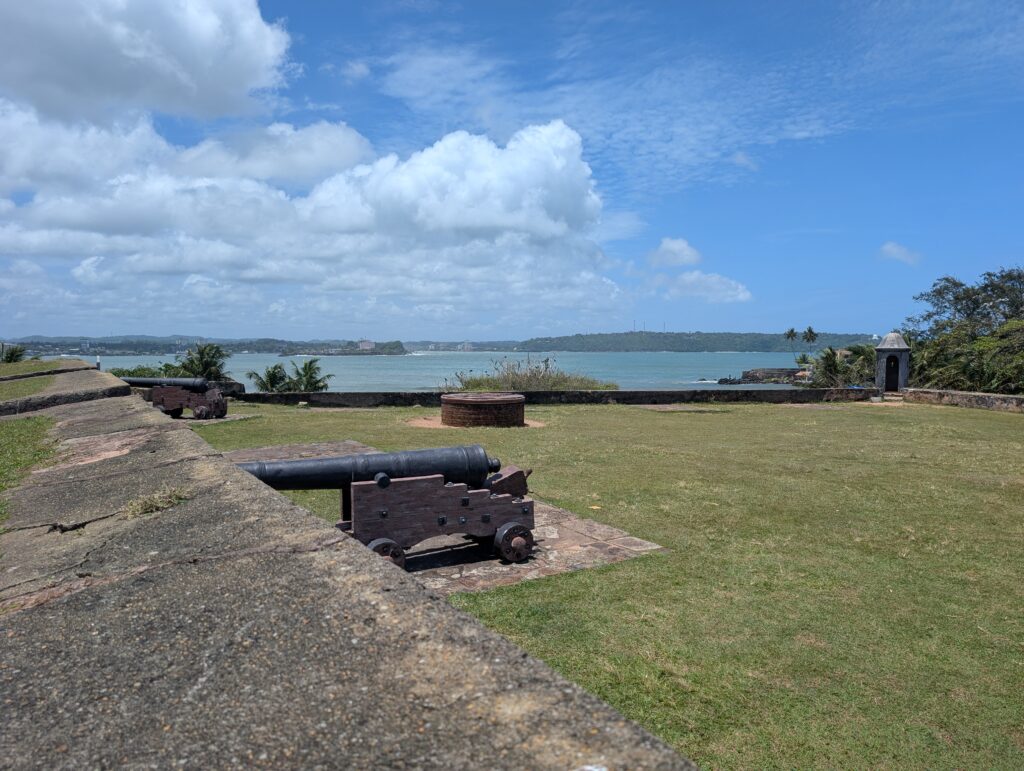

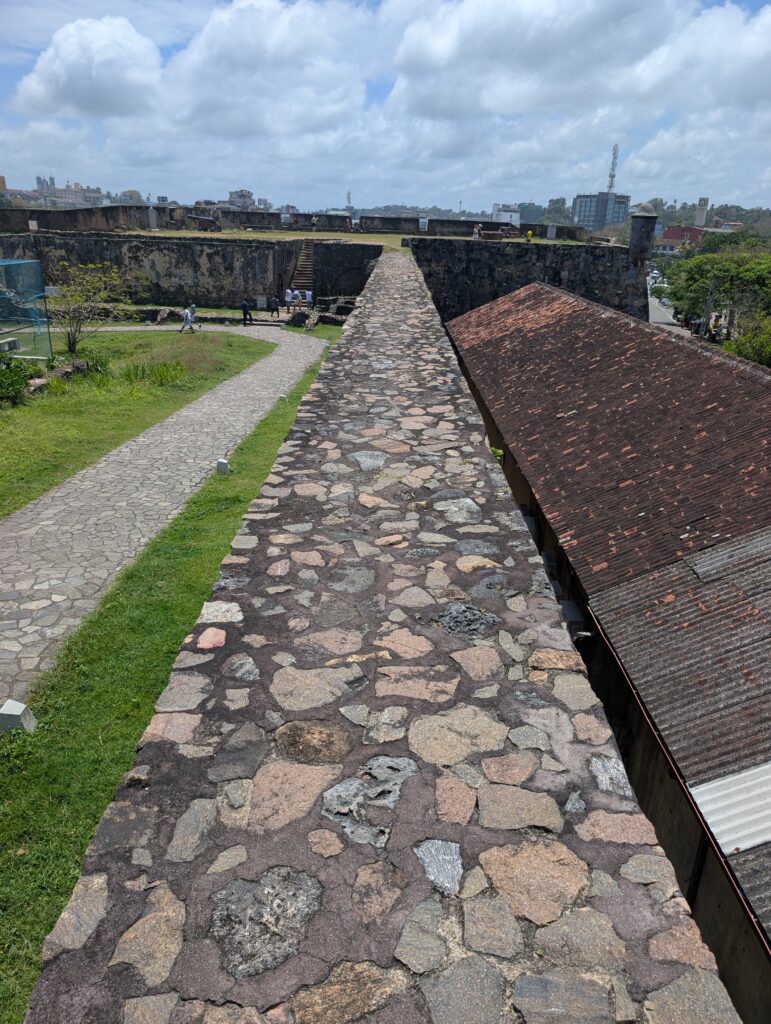

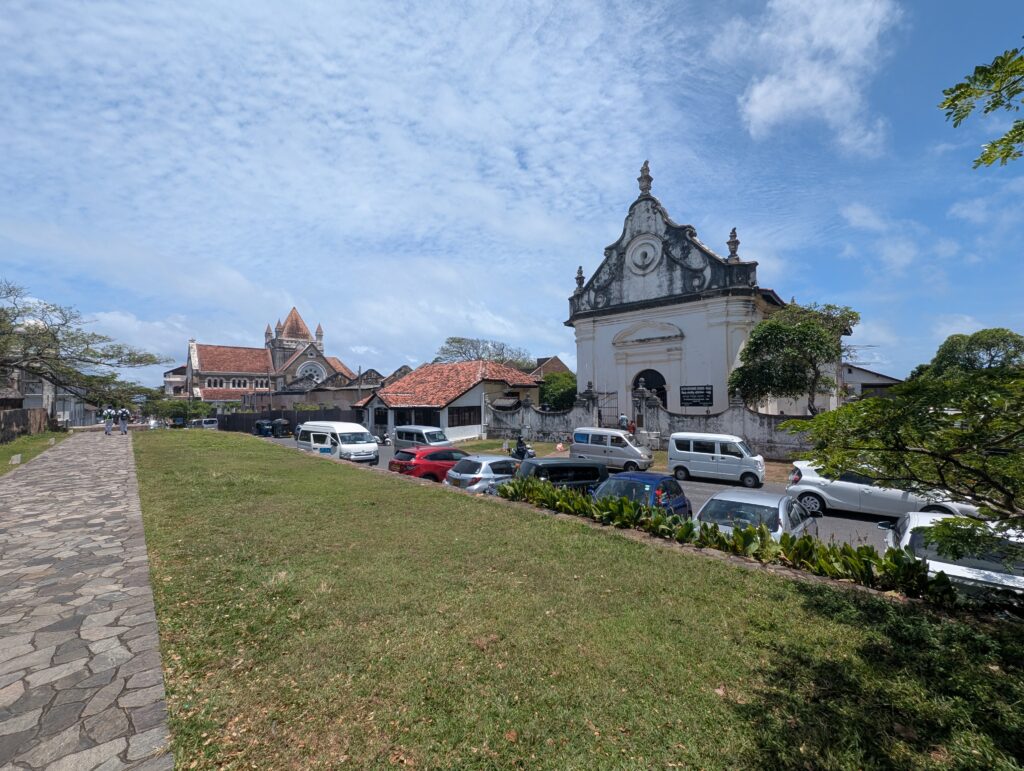
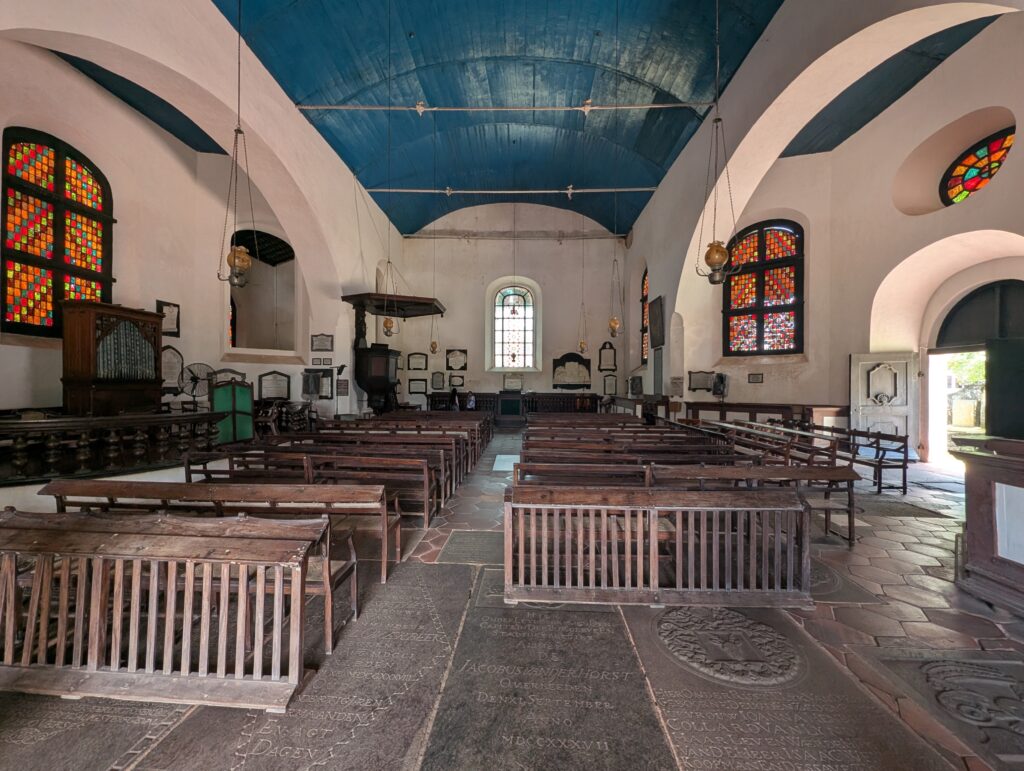
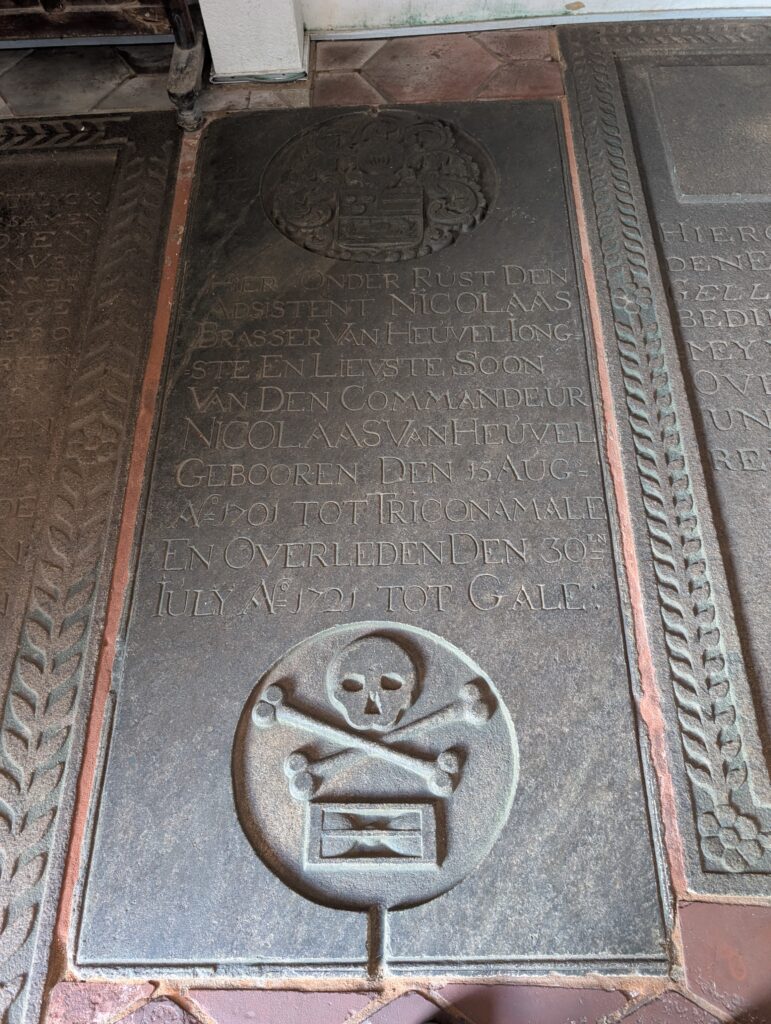
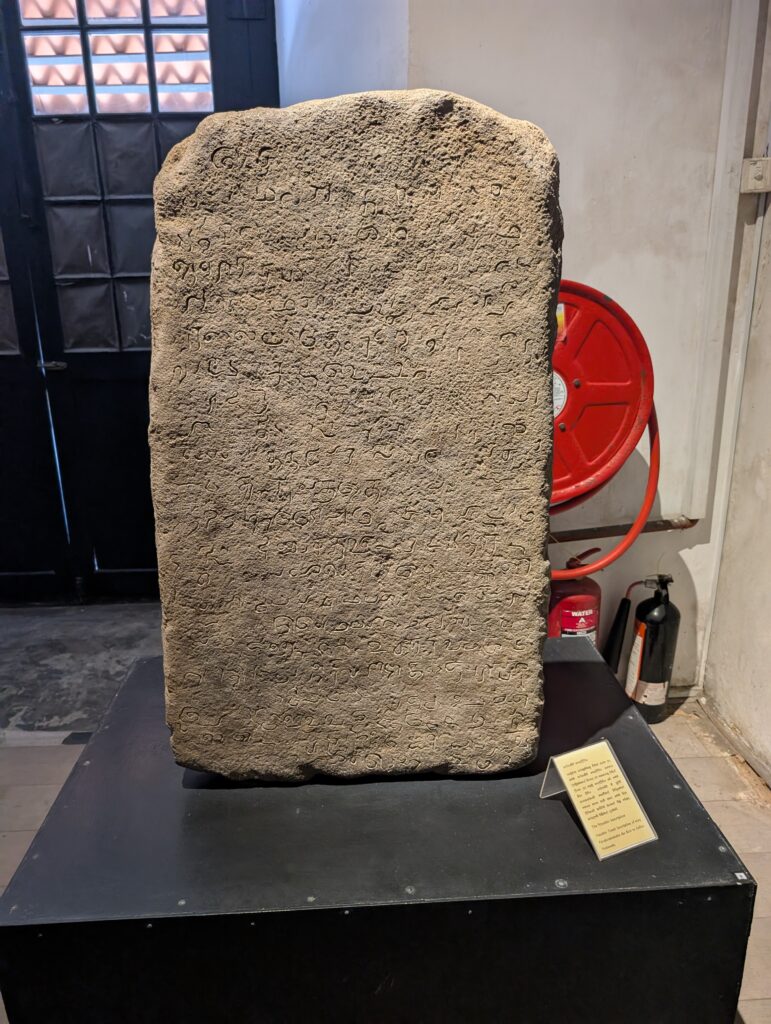
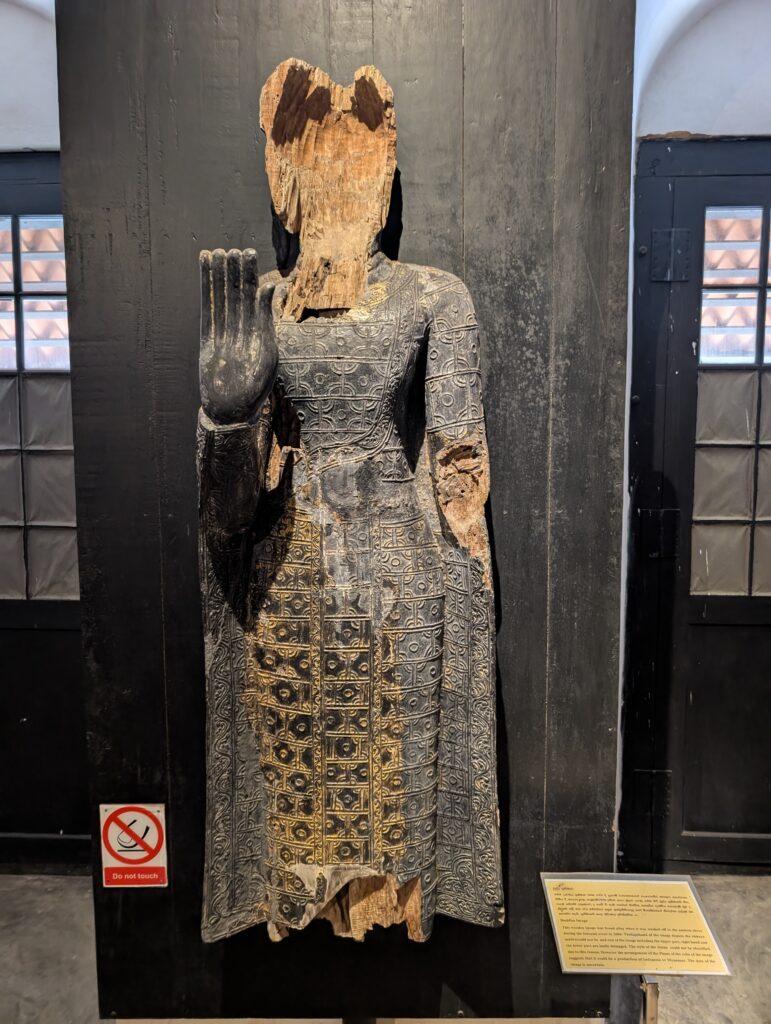
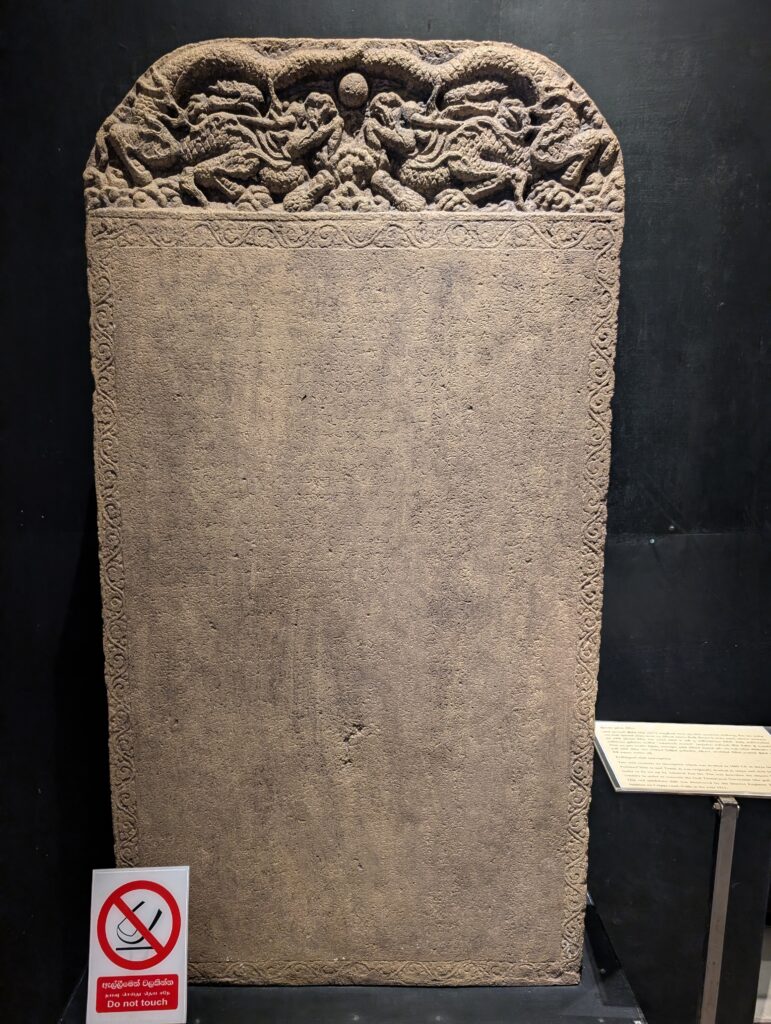

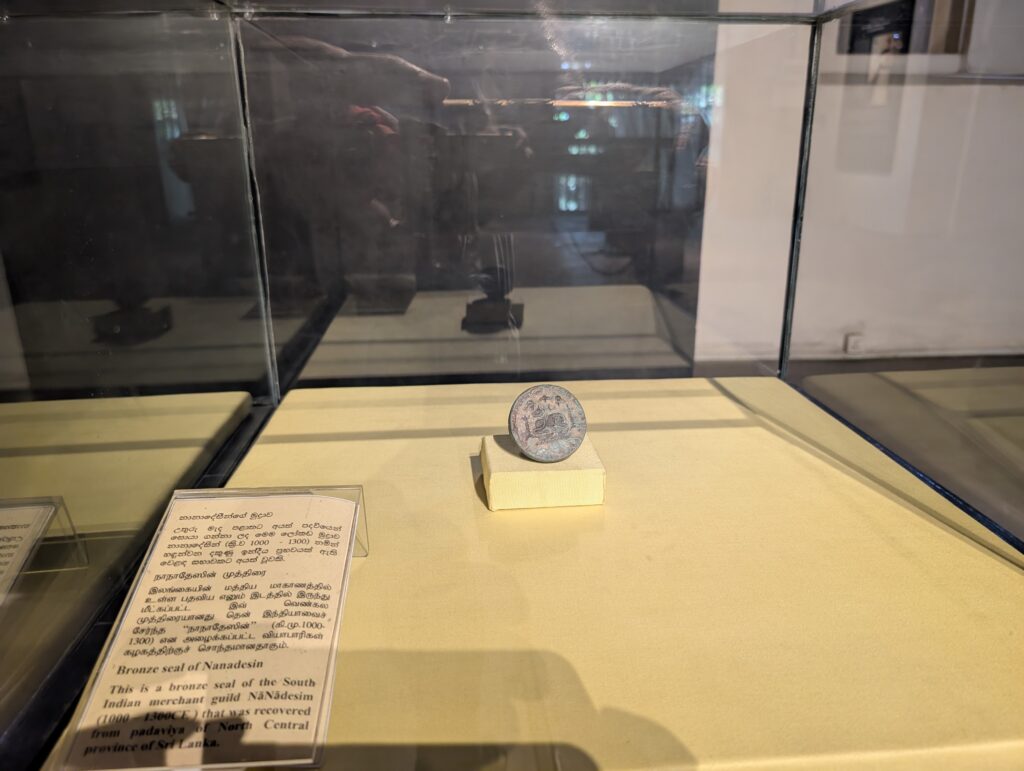
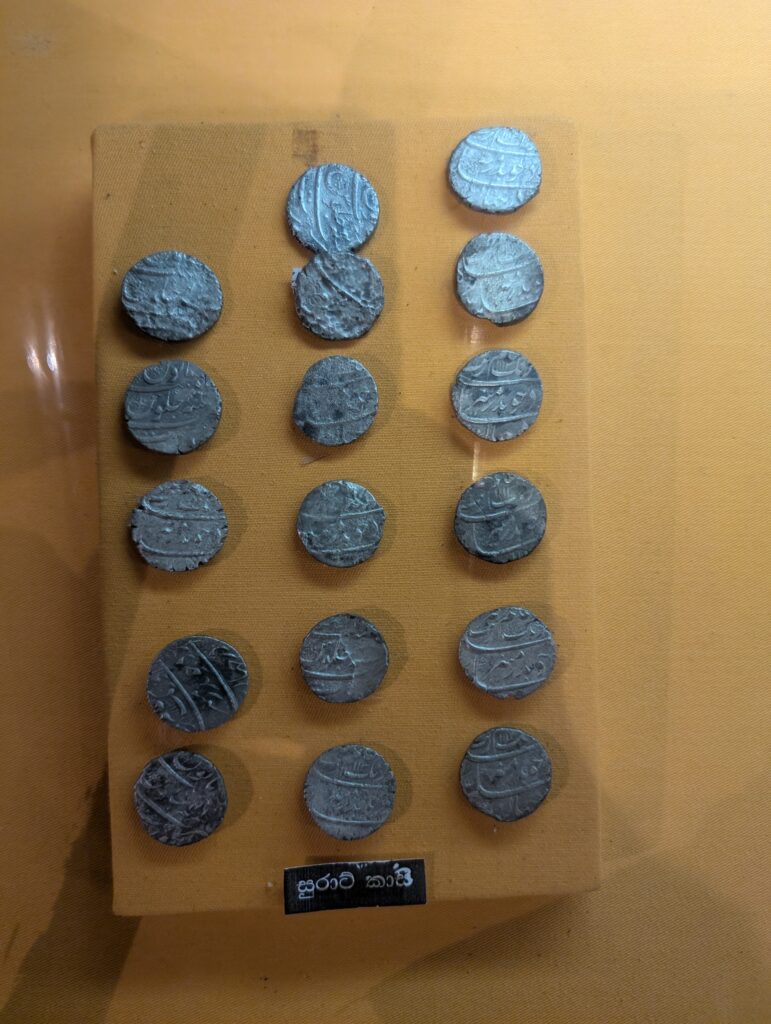


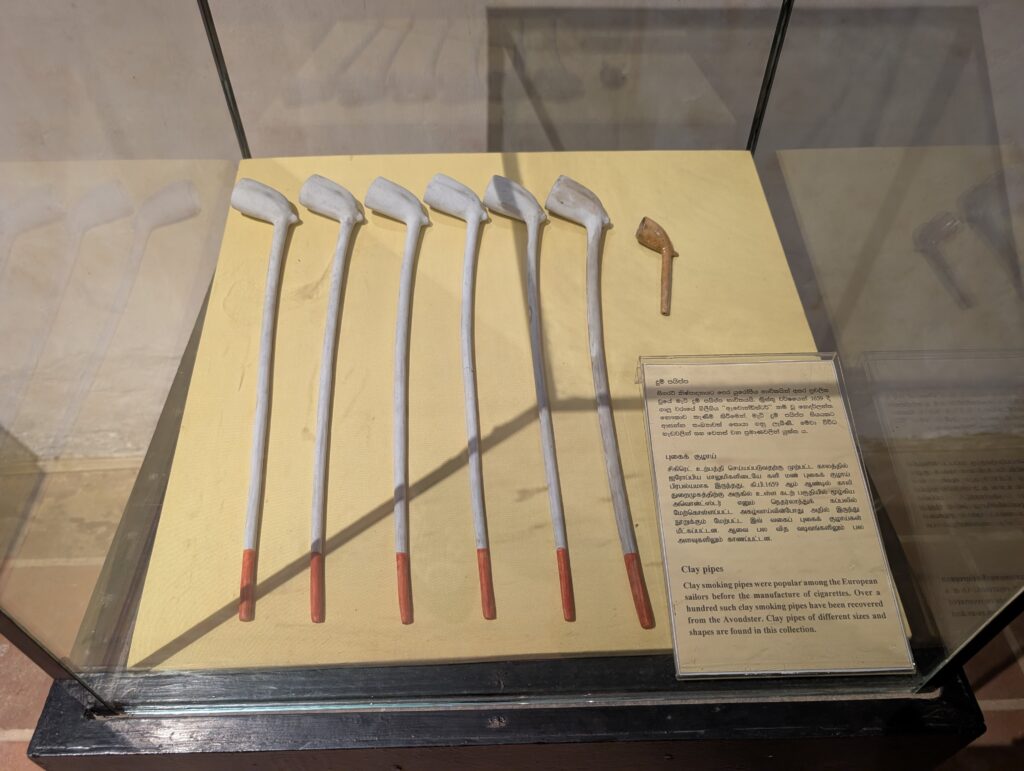
After posting my cards, I walked over to the outfield fence of the cricket pitch. With the help of Google Translate, I was able to communicate some with the few spectators also watching from the cyclone fence. They were parents of kids trying out for the team. They were the ones who told me definitively that was what was going on. Another man came up and began some friendly conversation. As usual, this turned out only to be an inroad into building my confidence so he could offer to provide special services for money. He would be whatever I wanted – guide, driver, pimp, whatever I needed. He just needed to know what I needed. What I really needed was not to be solicited at every turn, so I walked around to the other side of the club. I approached the door and asked the security man if there was a place for spectators to watch the tryout. He generously invited me in to the cabana covered tables meant for members, where I sat for about an hour, gleaning as much as I could from the cricket tryout until it ended.
I made a quick pass through the beautifully decorated Sri Meenachi Sundareshwarar Hindu temple on the way back to my room. I was able to observe parts of the worship, as well as the facilities, which I thought were quite nice.
On the way home, I stopped by a tiny open air eatery about half a mile from my motel. I settled in for a hearty, inexpensive portion of kottu which had become my go-to fare in Sri Lanka. Kottu is made primarily from chopped up, fried roti. It is pretty oily, and is served stir fried with curry, vegetables, and some usually some kind of egg or meat protein. The meat portions are usually very low quality meat, but provide good flavor, and some bits of edible protein along with the chopped up bread. Most restaurants prepare this while you wait. The chopping happens while the roti is frying. The cook does this with a noisy, rhythmic chopping sound. The chopping pattern is distinct, and seems to create a universal sound. It’s all part of the experience. I ate my kottu at the same restaurant every night in Galle. I became enough of a regular that the owner and some of the regular customers recognized me and made small talk. I made one young friend who was studying to be an Islamic cleric of some kind. We still correspond occasionally.
I followed my own advice for the rest of my time in Sri Lanka. I relaxed in my room. I ran each day along the beachfront promenade. I ate my kottu. I bought some groceries and made some food. I made my plans to go to India. I bought tickets for my air travel to Bahrain and Qatar. I talked to Stephanie. I listened to some podcasts. I looked for churches to attend along the rest of my path. I wrote some, and built some web pages. I got some much needed rest going into my last couple of weeks on the road. There were some nice things to see in Sri Lanka, and it has the potential to be a wonderful tourist destination. Nevertheless, I had had enough of the constant shake down. I was ready to move on to the next destination. For a very long time, I had been looking forward to the personal experience of staying with a local family that had invited me to visit Maharashtra. Little did I know, that plan was about to abruptly change.
